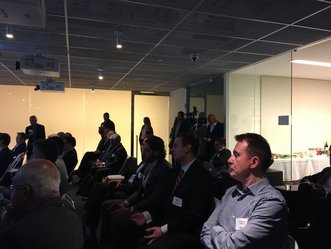In the world of financial markets, there’s an old saying (from 1984) attributed to former Citicorp CEO and chairman Walter Wriston: “Information about money has become almost as important as money itself.”
More than 30 years later, that sentiment has surely become a truism, especially in an age of fast, global communications, flash crashes, big data analytics and digital currencies. It’s a market that Thomson Reuters knows well.
From a technology perspective, Thomson Reuters has amassed a good deal of expertise in building capabilities that will likely be of utility as blockchains move from proofs-of-concept (POCs) to pilots and beyond. As examples, some 50,000 developers make use of the company’s application programming interfaces, it currently stores more than 60,000 terabytes of data and its network handled a record 79 billion messages during a 24-hour period following the so-called Brexit vote in 2016.
It’s important, then, that Thomson Reuters is making early moves into investigating blockchain technology, how it might be useful to the financial markets and what role it could play.
Here’s what the company has done to date:
Investments
Thomson Reuters has so far invested in three blockchain startups. The first investment in November 2015 was in Hijro, which operates in the trade finance space. Then, in October 2016, it co-led a round in Funderbeam, which is building a funding platform for pre-IPO companies.
A couple of months later, the company invested in Axoni, a financial markets blockchain platform vendor with which it had previously worked on a blockchain POC in the equity swaps area (it also worked with TradeBlock, a sister company of Axoni on cryptocurrency analytics for its Eikon service).
Consortia Membership
As with some other large companies, Thomson Reuters is working with more than one of the significant blockchain consortia. It joined the Linux Foundation’s Hyperledger Project in March 2016 and then became a member of R3’s financial markets consortia in August. Earlier this year it became a founding member of the Enterprise Ethereum Alliance, having already released one offering and hosted two hackathons in the Ethereum space.
Product Development
First showcased by Thomson Reuters in September 2016, BlockOne ID for Ethereum is an identity-mapping service for the blockchain, allowing digital identities to be mapped onto Ethereum addresses. While the POC supports digital IDs such as Facebook, Twitter and Google IDs, a likely product path would be to support the professional know-your-customer services that the company already offers.
Last month, the company rolled out BlockOne IQ, an oracle service to deliver data to smart contracts. The service initially supports Ethereum and R3’s Corda, although future support for other platforms is likely.
With BlockOne IQ, smart contracts developers use client libraries to tap into a wealth of hosted Thomson Reuters data, including cryptographically-signed current securities, prices, foreign exchange rates, corporate actions, cryptocurrency rates and financial benchmarks.
Company executives stress that the BlockOne services are beta offerings designed for POCs and that no decision has yet been made to productize them and charge for them. But if they prove useful and popular (and you can expect both of those things to happen), other services will be introduced.
With blockchain technology’s promise in the financial markets, it’s a natural technology for Thomson Reuters to leverage and the impact will likely be an important one.



 RSS Feed
RSS Feed